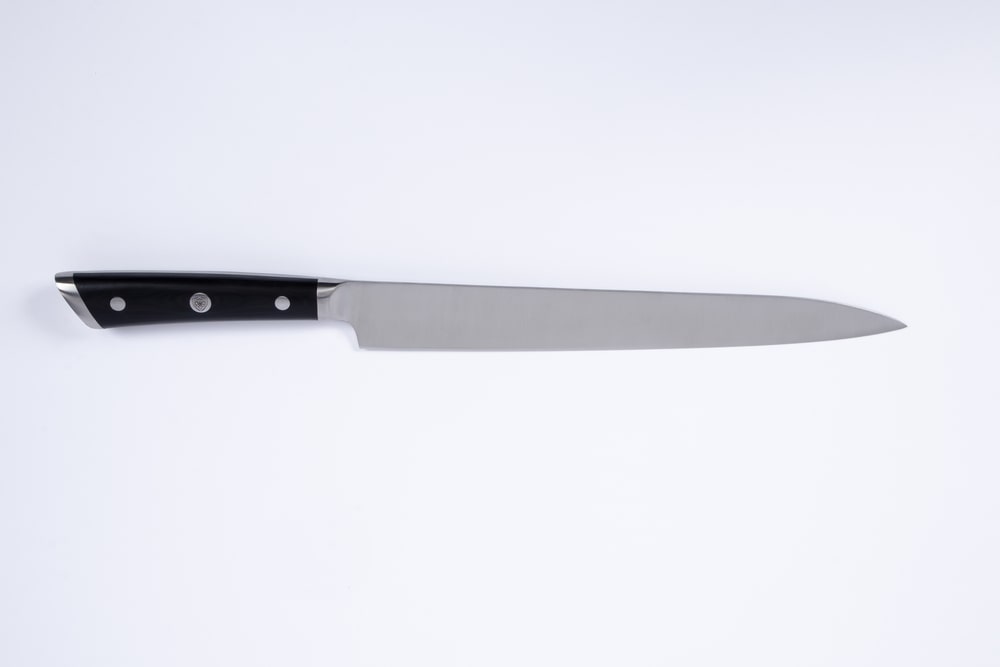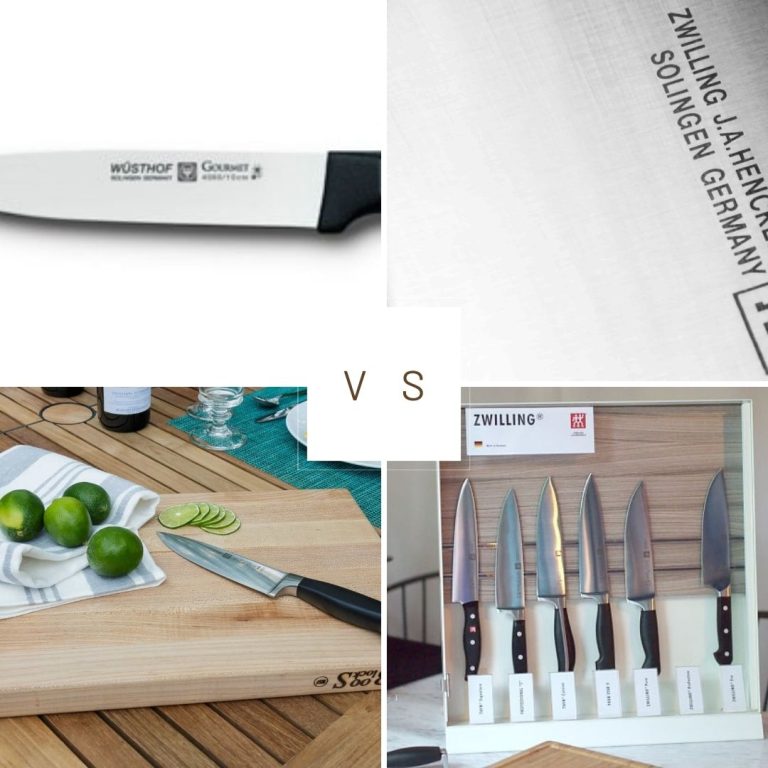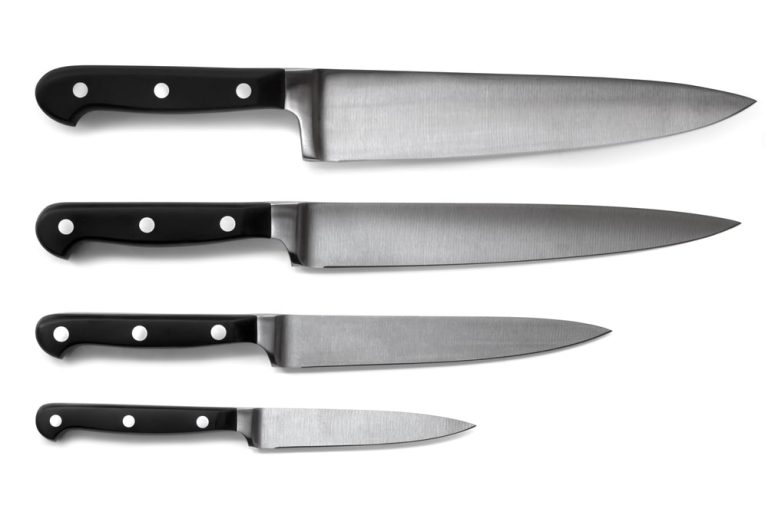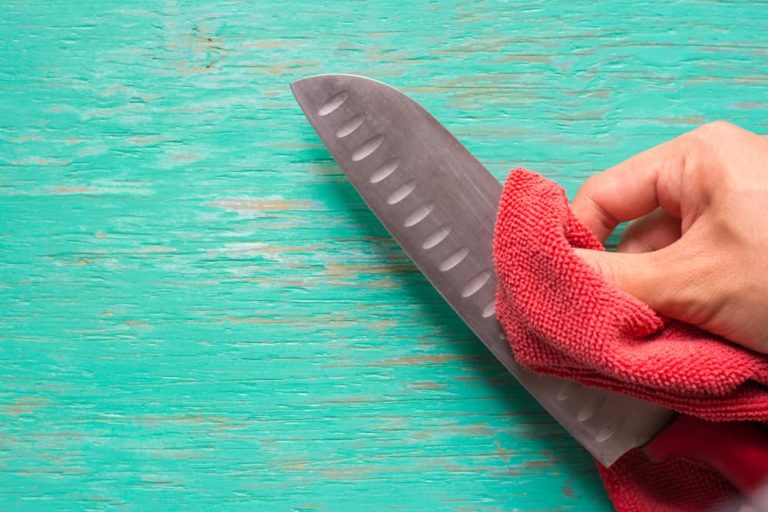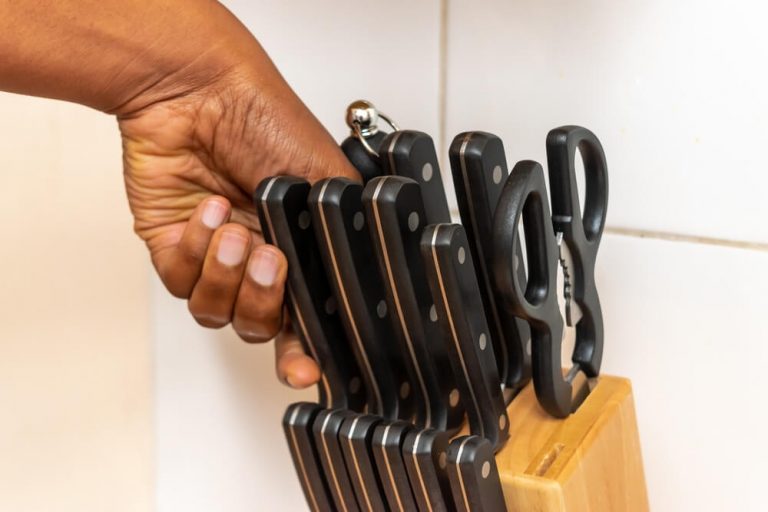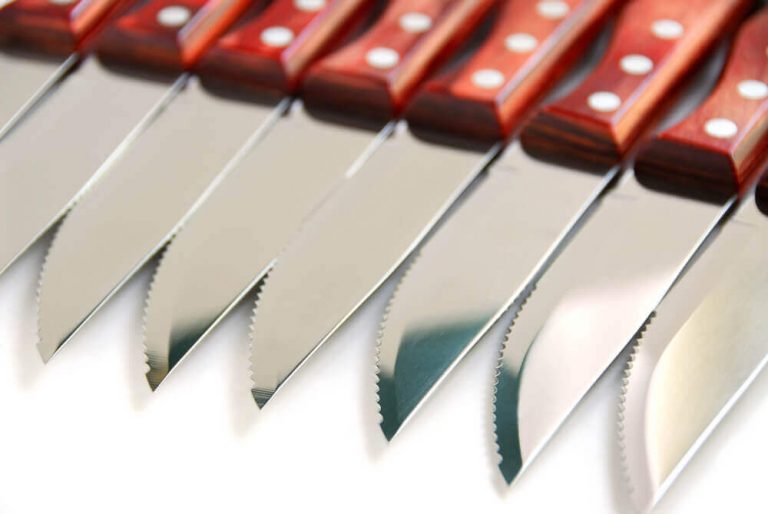In the serene ambiance of an early morning kitchen, a culinary enthusiast, passionately engaged in the art of cooking, faces an unexpected adversary—a dull knife. The scene unfolds with palpable tension as tomatoes squish under the blade, herbs bruise rather than chiffonade, and slicing becomes a laborious task. The enthusiasm dims, replaced by a growing frustration that turns the joy of cooking into a test of patience.
Suddenly, the narrative shifts with the introduction of a finely honed Dalstrong knife. Like a conductor’s baton orchestrating a symphony, the knife glides through ingredients with unparalleled ease, transforming the kitchen from a battleground to a stage of culinary artistry. The enthusiast’s frustration dissolves into a rush of elation, as slices fall with precision and grace. This moment crystallizes an undeniable truth: the essence of culinary excellence lies in the sharpness of the knife, a principle that Dalstrong embodies with every blade forged.
Recognizing the critical importance of this sharpness, the ensuing content delves deep into the heart of maintaining Dalstrong knives. Through a comprehensive exploration, how to sharpen Dalstrong knives, understanding the unique qualities that define Dalstrong knives, to mastering the techniques of preserving their razor-sharp edge. The journey unfolds in detailed sections, starting with an overview of Dalstrong’s craftsmanship, moving through the reasons that make regular sharpening indispensable, and culminating in a step-by-step tutorial on the sharpening process. This content promises not just to educate but to empower culinary enthusiasts, ensuring that their blades reflect their passion, slice by precise slice.
Understanding Dalstrong Knives
The Craftsmanship Behind Dalstrong Knives
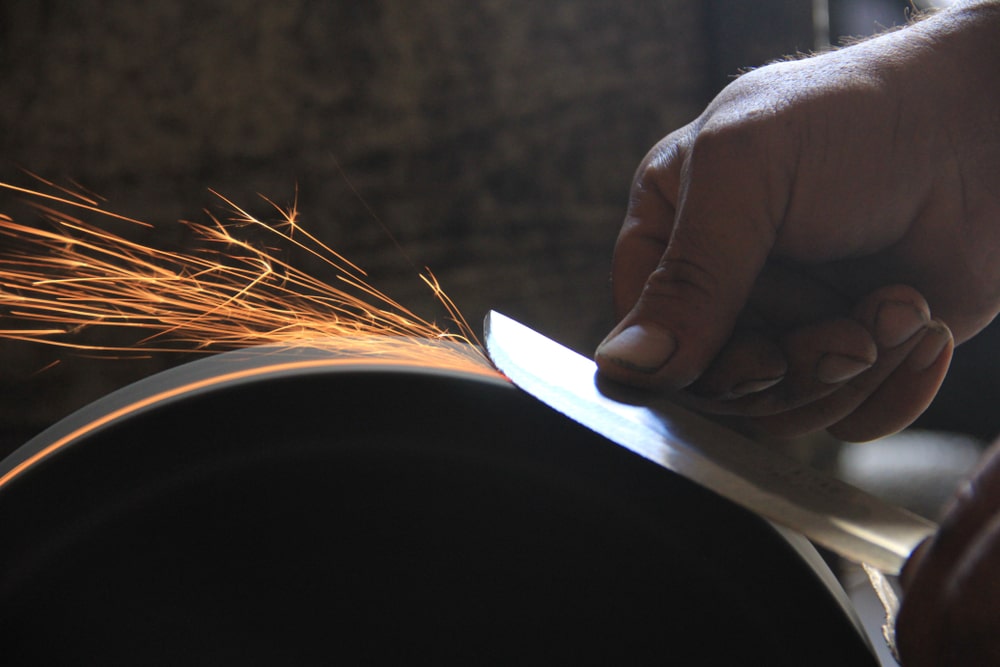
Types of Dalstrong Knives and Their Uses
Dalstrong’s array of knives caters to every culinary task imaginable. The Chef’s Knife, agile and versatile, is the quintessential multi-tasker, ideal for chopping, dicing, and slicing. The Paring Knife, with its small, sharp blade, excels in precision tasks like peeling and trimming. For bread and delicate pastries, the Serrated Knife cuts without crushing. The Santoku Knife, a marvel of Japanese craftsmanship, is perfect for slicing, dicing, and mincing with its scalloped blade minimizing friction. The Boning Knife, flexible and sharp, is designed for deboning meat with precision. Each model is crafted to enhance the culinary experience, transforming routine tasks into moments of creative joy.
Why Sharpness Matters in Culinary Excellence
Sharpness is the soul of a knife, vital for both culinary excellence and kitchen efficiency. A sharp Dalstrong knife ensures clean, precise cuts that preserve the integrity of ingredients, enhancing flavors and presentation. It reduces the effort required for slicing, making kitchen tasks more enjoyable and less time-consuming. More importantly, a sharp knife is a safer knife. It offers better control, reducing the likelihood of the blade slipping and causing injury. In essence, the sharpness of Dalstrong knives is not merely a feature but a foundational aspect of culinary artistry, merging safety, efficiency, and aesthetic pleasure into every cut.
The Impact of Dull Knives on Your Cooking
Safety Concerns with Dull Knives
The danger of a dull knife often goes unnoticed until it’s too late. Unlike their sharper counterparts, dull knives require more force to cut through ingredients, significantly increasing the risk of the knife slipping and causing injury. This lack of control can turn the simple act of slicing vegetables into a precarious endeavor. In essence, the safety concerns associated with dull knives cannot be overstated; they compromise not only the efficiency of your culinary efforts but also endanger the well-being of those who wield them, making sharpness a non-negotiable aspect of kitchen safety.
The Effect on Food Texture and Presentation
A dull knife can be the downfall of even the most carefully planned dishes. The integrity of ingredients suffers greatly under a blunt blade, leading to bruised fruits and vegetables, jagged cuts, and uneven sizes. These imperfections affect not just the aesthetics of a dish but its texture and taste as well. Precise, clean cuts made by a sharp knife, on the other hand, maintain the structure and freshness of ingredients, ensuring that the final presentation is as pleasing to the eye as it is to the palate. It is in these nuances that culinary creations come to life, framed by the precision of a fine edge.
The Hidden Costs of Not Maintaining Your Knives
Neglecting knife maintenance carries more consequences than meets the eye. Beyond the immediate risks of accidents and compromised food quality, dull knives also lead to increased preparation time and strain on the user, which can culminate in fatigue or even repetitive strain injuries over time. These hidden costs erode the joy of cooking, transforming an act of passion into one of labor and frustration. Furthermore, the need to replace poorly maintained knives more frequently imposes unnecessary financial burdens. Maintaining the sharpness of your knives thus emerges as both a culinary and economic imperative, safeguarding against these multifaceted consequences.
Getting to Know Your Sharpening Tools
Sharpening Stones vs. Honing Rods vs. Electric Sharpeners
When it comes to maintaining the keen edge of Dalstrong knives, three primary tools emerge: sharpening stones, honing rods, and electric sharpeners. Each has its place in the kitchen, suited for different types of maintenance and knives.

Sharpening Stones, the traditional choice, offer the most control over the sharpening process, allowing for a personalized edge suited to the intricate needs of different Dalstrong blades. They are ideal for restoring sharpness to dull knives but require skill and practice to use effectively.
Honing Rods don’t sharpen but realign the edge of the knife, perfect for maintaining sharpness between more intensive sharpenings. They are suited for quick touch-ups and are essential for keeping your Dalstrong knives performing at their best on a day-to-day basis.
Electric Sharpeners provide convenience and speed, removing the guesswork from sharpening. However, they offer less control over the sharpening process and can be less versatile in accommodating the various angles and edge profiles of Dalstrong knives. While practical, they may not always achieve the precision edge that traditional sharpening stones can.
Each tool serves a purpose, and the choice depends on the specific needs of your Dalstrong collection, your skill level, and how much time you are willing to invest in maintenance.
Understanding Grit Sizes for Sharpening Dalstrong Knives
The outcome of sharpening Dalstrong knives is significantly influenced by the grit size of the sharpening stone used. Grit size determines the fineness or coarseness of the stone, affecting both the sharpness and the polish of the knife edge.
Coarse Grit (Below 1000) is used for repairing damaged edges or sharpening extremely dull knives. It removes material quickly but leaves the edge rough.
Medium Grit (1000 to 3000) is ideal for routine sharpening. It sharpens edges effectively without removing excessive material, making it suitable for maintaining the sharpness of your Dalstrong knives under normal use conditions.
Fine Grit (Above 3000) polishes and refines the edge, enhancing its sharpness and smoothness. This level is perfect for finishing touches on your blade and is particularly recommended for Dalstrong’s higher-end models to achieve ultrasharp, polished edges.
Choosing the correct grit size is crucial for achieving the desired sharpening outcome. It’s about balancing material removal, edge sharpness, and the polish level — aligning with the specific requirements of each Dalstrong knife in your collection. Understanding grit sizes and their implications allows you to tailor the sharpening process to your culinary needs, ensuring that your blades are always in prime condition.
Step-by-Step Guide to Sharpening Your Dalstrong Knives
1. Preparation
Begin by choosing the appropriate sharpening stone for your Dalstrong knife. If it’s significantly dull, start with a coarse grit; for routine sharpening, a medium grit is sufficient. Soak water stones for the recommended period (often around 5-10 minutes) until saturated. Secure the stone on a non-slip base to ensure stability during sharpening. Clean the knife blade with soap and water, drying it thoroughly to remove any debris or oils that could hinder the sharpening process. This preparation stage sets the foundation for a successful sharpening, ensuring that both the tool and the knife are primed for optimal results.
2. Sharpening Motions
Position the knife against the stone at an angle consistent with the blade’s existing edge—usually around 15-20 degrees for Dalstrong knives. Maintain this angle throughout the sharpening. Gently push the blade across the stone in a sweeping motion, as if trying to slice a thin layer off the top. Start from the heel and move towards the tip, applying even pressure. Repeat this motion 5-10 times, depending on the knife’s dullness, before flipping to the other side and repeating. The goal is a balanced, sharp edge. Keep the stone moist by occasionally sprinkling it with water to ensure smooth movement and prevent metal particles from clogging the stone’s surface.
3. Honing for Maintenance
After sharpening, honing realigns the knife’s edge, ensuring it’s straight and ready for efficient cutting. Hold the honing rod vertically on a stable surface, tip down. Place the heel of the knife against the top of the rod at the same angle as you sharpened it. Slide the knife down the rod, pulling it towards you, covering the entire length of the blade. Repeat this action 6-8 times for each side of the blade. Honing should be done more frequently than sharpening—ideally before each use of your Dalstrong knife—to maintain its edge and reduce the need for frequent sharpenings.
4. Aftercare
Proper aftercare extends the lifespan of both your knife and sharpening tools. Rinse the sharpened Dalstrong knife with warm water and dry it immediately with a soft cloth to prevent rust. Clean your sharpening stone according to the manufacturer’s instructions, often requiring nothing more than water and a brush to remove metal filings. Store your knife properly, ideally in a knife block or on a magnetic strip, to protect its newly sharpened edge. Finally, treat the blade regularly with a food-grade mineral oil to protect its surface, particularly if it’s made from carbon steel. This comprehensive care ensures that your Dalstrong knife remains a prized asset in your culinary collection, always ready for the next task.
Advanced Tips and Tricks
Diagnosing Common Sharpening Mistakes and How to Avoid Them
Common sharpening mistakes include using too much force, leading to unnecessary wear on the knife and uneven edges, and inconsistent blade angles, which result in an improperly sharpened edge. To avoid these, focus on maintaining a consistent angle throughout the sharpening process and use gentle pressure. Practicing a steady, methodical approach reduces the likelihood of these errors. Remember, sharpening is an art that emphasizes precision over force, and patience over speed. Watching professional tutorials and continuous practice are key to minimizing mistakes and enhancing your sharpening technique.
The Role of Angle Guides in Precision Sharpening
Angle guides are invaluable tools for achieving precision in knife sharpening, particularly for beginners or those looking to ensure consistent results. They assist in maintaining the correct angle between the knife blade and the sharpening stone, a critical factor in obtaining a sharp, effective edge. For Dalstrong knives, which often benefit from specific edge angles for optimal performance, angle guides can be a game-changer. They eliminate guesswork, ensuring that each pass across the stone contributes to a finely honed edge. Incorporating an angle guide into your sharpening toolkit can significantly improve accuracy, reduce the likelihood of mistakes, and ultimately extend the lifespan of your cherished Dalstrong knives.
Creating a Sharpening Schedule: How Often Should You Sharpen?
Establishing a sharpening schedule depends on knife usage and the types of foods being cut. Generally, for avid home cooks using Dalstrong knives daily, sharpening every 1-2 months is recommended. However, regular honing before each use will maintain the edge, potentially extending the time between sharpenings. Pay attention to the knife’s performance; if slicing becomes laborious or the blade struggles with tasks it once handled effortlessly, it’s likely time to sharpen. Setting reminders can be helpful, but the best schedule is one that’s responsive to the knife’s condition. Over time, you’ll develop a sense for when sharpening is necessary, ensuring your Dalstrong knives always perform at their best.
Beyond the Edge: Enhancing Your Culinary Skills with Sharp Knives
The Intersection of Knife Maintenance and Culinary Artistry
The essence of culinary artistry extends beyond the mere preparation of ingredients; it thrives on the precision and care invested in every aspect of cooking, starting with knife maintenance. A sharp knife allows for a level of refinement in cuts that can elevate a dish from simple to sublime, encouraging the exploration of complex textures and presentation techniques. By mastering the art of knife sharpening, chefs can assure that every slice contributes to the visual and sensory appeal of their creations. This meticulous attention to detail underscores the intimate connection between the condition of one’s tools and the level of culinary artistry achievable, making knife maintenance not just a routine task but a cornerstone of culinary excellence.
Sharpen Your Skills: Practice Techniques with Your Dalstrong
Well-maintained Dalstrong knives offer a perfect opportunity to refine your culinary skills through practice. Techniques like julienne, brunoise, and chiffonade, which demand precision, become more accessible and enjoyable with a sharp blade. Engaging in these practice techniques not only enhances your knife skills but also encourages culinary creativity. Try tackling a variety of ingredients, from the firm textures of root vegetables to the delicate nature of herbs and leafy greens. This diversity offers challenges and learning opportunities, pushing the boundaries of your culinary capabilities. As your confidence grows, so will your willingness to experiment with new recipes and presentation styles, transforming every meal into a crafted experience.
The Meditative Aspect of Knife Care
The process of knife care, from cleaning and drying to sharpening and honing, encapsulates a meditative practice that deepens one’s connection to the culinary arts. This ritualistic engagement offers a moment of reflection and respect for the tools of the trade, fostering a mindful approach to cooking. The act of sharpening a knife, in particular, requires focus and patience, qualities that translate into the deliberate and intentional preparation of food. This meditative aspect reinforces the idea that culinary excellence is not just about the end product but also about the care, attention, and respect for the process and tools involved. By embracing the meditative practice of knife care, chefs and enthusiasts alike can enhance their culinary skills, finding both tranquility and a deeper sense of fulfillment in the kitchen.
Conclusion
Throughout this guide, we’ve embarked on a comprehensive journey from how to sharpen dalstrong knives to the foundational understanding of the craftsmanship and variety of Dalstrong knives to the nuanced art of maintaining their sharpness through proper care and sharpening techniques. We’ve explored the importance of selecting the right tools and honing our skills to ensure these culinary instruments perform at their peak, highlighting the interplay between sharp knives and culinary artistry.
Embrace the discipline of regular knife maintenance as more than a chore; see it as a rite of passage to culinary excellence. Let each sharpening session be a step towards perfecting your craft, understanding that a well-maintained knife is an extension of the chef’s intent and creativity. By prioritizing the sharpness of your Dalstrong knives, you lay the groundwork for safety, efficiency, and the utmost precision in every culinary endeavor. Let this guide be the start of a journey that transforms not just the way you maintain your knives, but also elevates your cooking to new heights of sophistication and skill.

